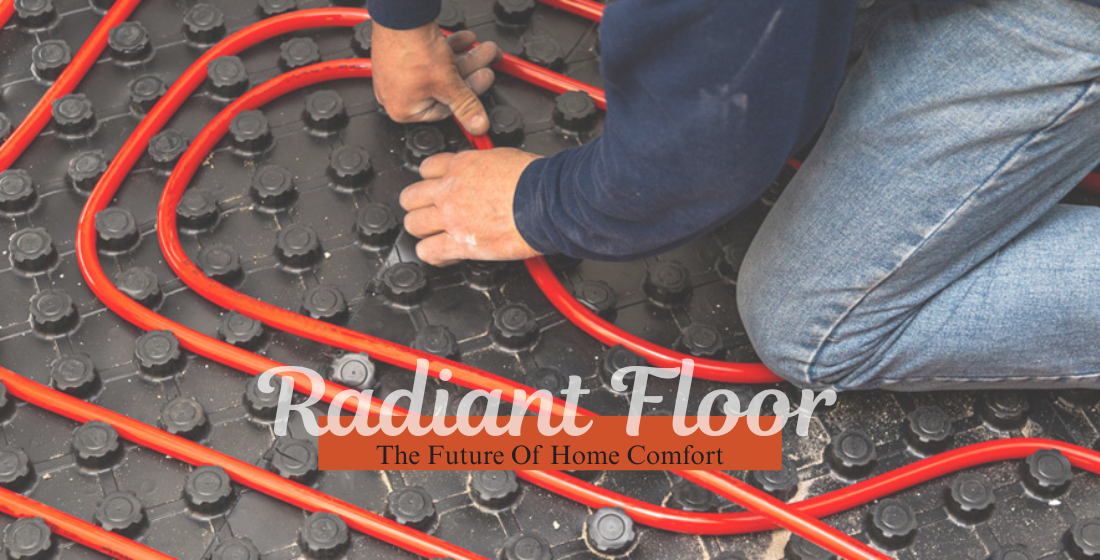Radiant floor heating system is a revolutionary and cost-effective method to heat your house, with several benefits compared to conventional heating systems. In contrast to forced-air systems, where ducts push hot air all over a space, radiant floor heating warms the floor itself, making the place more comfortable and energy-effective. Here’s an in-depth examination of radiant floor heating and the advantages it offers.
What is Radiant Floor Heating?
Radiant floor heating consists of a system of heating cables or tubing buried under the floor. The systems may be electricity-based (electric radiant heating) or water-based (hydronic radiant heating). Electric systems utilize cables or mats that become hot when electrified, whereas hydronic systems run warm water through embedded pipes. Both systems directly transfer heat to the floor, and the heat radiates upwards, heating the room from the ground.
Benefits of Radiant Floor Heating
1. Enhanced Comfort
One of the main benefits of radiant floor heating is the degree of comfort it offers. Conventional heating systems, like forced air, tend to produce hot and cold areas within the room, resulting in uneven heating. Radiant floor heating gets rid of these hot and cold areas by distributing heat evenly over the whole floor so that all points of the room are as comfortable as each other.
Secondly, radiant heat is more natural, as it replicates the heat of the sun. It warms objects and individuals directly instead of merely warming the air, producing a warm ambiance without the dryness caused by forced air.
2. Energy Efficiency
Radiant floor heating is also highly energy efficient. Since it warms the floor and things in the room instead of the air, the system is operating at a lower temperature than conventional heaters, without burning more energy. This reduced temperature, coupled with the fact that the system can hold on to the heat for a longer time, is what results in less energy usage. Hydronic systems are especially efficient since water is an efficient heat conductor and holds heat for a relatively long time.
With radiant floor heating, you are able to use lower temperatures and remain comfortable, which equates to energy bill savings in the long run.
3. No Noise or Drafts
In contrast to forced air systems that have the potential to be loud or produce drafts, radiant floor heating is silent. This is particularly advantageous for individuals who are noise sensitive or who reside in a region where dust or allergens may become airborne with conventional heating systems. Radiant heating does not stir up dust, and therefore, it is an ideal option for allergy sufferers.
4. Increased Space and Design Flexibility
Radiant floor heating systems are concealed under the floor, so they occupy zero visual space within the room. This provides you with greater design freedom since you can design a more visually appealing environment without the inconvenience of cumbersome radiators or vents. Since there is no visible equipment, you can design your home without concern for where to put conventional heaters..
Also, radiant floor heating can be installed under nearly any type of flooring, such as tile, wood, carpet, and even stone, which means it can be adapted to any space or style.
5. Better Air Quality
Conventional forced-air systems distribute dust, allergens, and pollutants around the house, which may lower indoor air quality. Because radiant floor heating does not depend on blowing air, it never forces dust or allergens into the air, enhancing overall air quality. It is therefore an excellent choice for individuals suffering from asthma, allergies, or respiratory ailments.
6. Increased Property Value
As a clean, efficient, and up-to-date home improvement, radiant floor heating can boost the resale value of your home. Most homebuyers are looking for houses with high-tech, environmental features, and radiant floor heating is a feature people consider a luxury, as it can enhance your home’s appeal in the market.
7. Comfort in Cold Areas
Radiant floor heating is especially useful in colder climates, where the ground temperature may cause houses to feel cold even with conventional heating systems. It heats up cold floors, removing the experience of walking on icy cold floors. This makes radiant floor heating most suitable for bathrooms, kitchens, basements, or any room with tile or stone flooring, which is normally colder on foot.
Conclusion
Radiant floor heating provides an elegant and energy-efficient means of warming your home. Its many advantages—comfort, efficiency, quiet operation, space-saving installation, and enhanced air quality—position it as a compelling choice for those upgrading their heating systems. Whether building a new home, renovating one, or simply interested in a greener heating alternative, radiant floor heating can greatly improve your lifestyle while providing long-term cost savings. With its potential to establish a warm, healthy, and energy-efficient environment, radiant floor heating is an investment that will be worth it for years to come.
Whether you’re exploring radiant floor heating for a new home, a renovation, or looking to enhance your franchise locations with energy-efficient solutions, our team at DEC MEP Services is here to guide you. With a proven record of delivering top-tier MEP-FP engineering solutions, we’re ready to help turn your vision into reality.
How to Install Radiant Floor Heating: A Step-by-Step Overview
- Determine the Right System for Your Needs
Choose between electric (best for small areas or renovations) and hydronic (ideal for whole-house systems or new builds). Consider the size of the space, energy source availability, and budget.
- Plan Your Layout
Work with a professional MEP engineer or contractor to design the optimal layout, ensuring compatibility with your flooring type and room structure.
- Prepare the Subfloor
Clean and level the subfloor. In the case of hydronic systems, install insulation boards to reduce heat loss downward.
- Connect the Thermostat and Controls
Install a programmable thermostat to regulate floor temperature and maximize energy efficiency.
- Install the Floor Covering
Once the system is tested and inspected, install your chosen flooring — tile, stone, engineered wood, or vinyl are commonly used.
- Test and Commission the System
Ensure all components work properly with a system check. Most installations require an inspection before full operation.
Frequently Asked Questions
While the upfront cost can be higher than traditional heating systems, especially for hydronic systems, the long-term energy savings and increased home value often justify the investment.
Yes! Radiant heating works with most flooring types, including carpet, hardwood, tile, and vinyl. Just ensure the flooring material is compatible with radiant heat and installed correctly.
Absolutely. Radiant systems are designed with safety in mind, including temperature limits and programmable thermostats. There’s also no risk of exposed hot surfaces or fire hazards like space heaters.
Yes. Hydronic systems are especially well-suited for whole-house heating, while electric systems are often used in specific rooms like bathrooms or kitchens.
With proper installation and maintenance, radiant heating systems can last 25 years or more. Hydronic tubing, in particular, is known for its durability and low maintenance.
It may take slightly longer to warm up compared to forced-air systems, but once the floor is heated, it retains heat longer and distributes it more evenly.
Yes! Electric systems are easier to retrofit during renovations. Hydronic systems are more complex but feasible with planning and expert help.





No comment